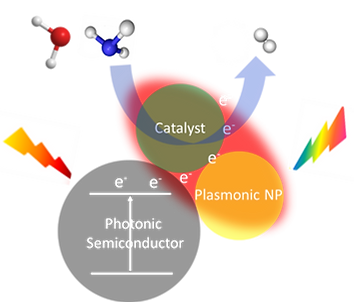Thanks Funding Agencies for Supporting Our Research:


Interfacial Reactions in
Nanoconfined Space

Plasmonic Materials for Photo(thermal)catalysis

The interface between two immiscible liquids, i.e., liquids with different polarities, creates a junction of a heterogeneous system that provides unique chemical environments, different from those of the bulk liquids, and in consequence, the structural, thermodynamic, chemical, and surface properties are changed. These changes are capable of engendering unusual chemical transformations. However, generating a large interfacial contact area is usually challenging. In this project, we will explore to develop stable and periodic nanosized liquid:liquid interfaces in hierarchically cross-connecting nanoporous materials (e.g., metal-organic frameworks) and to enable certain reactions happening between two immiscible liquids in nanoconfined space to enhance either reaction rate/yield or tune product selectivity.
The integration of plasmonic metals with photocatalytic semiconductors offers a synergistic approach to enhancing photocatalytic efficiency. Further research is needed to understand the detailed mechanisms of specific plasmon-enhanced systems, which can guide the design of more efficient and cost-effective photocatalysts. Our focus will be on studying defect and interface effects to understand how it affects charge transfer, exploring the generation and transfer of hot electrons, understanding the role of localized temperature increase in overall photocatalytic activity. We will also use in-situ and operando techniques to examine electronic structure and structural details of catalysts and to understand structural evolutions during photocatalysis process.